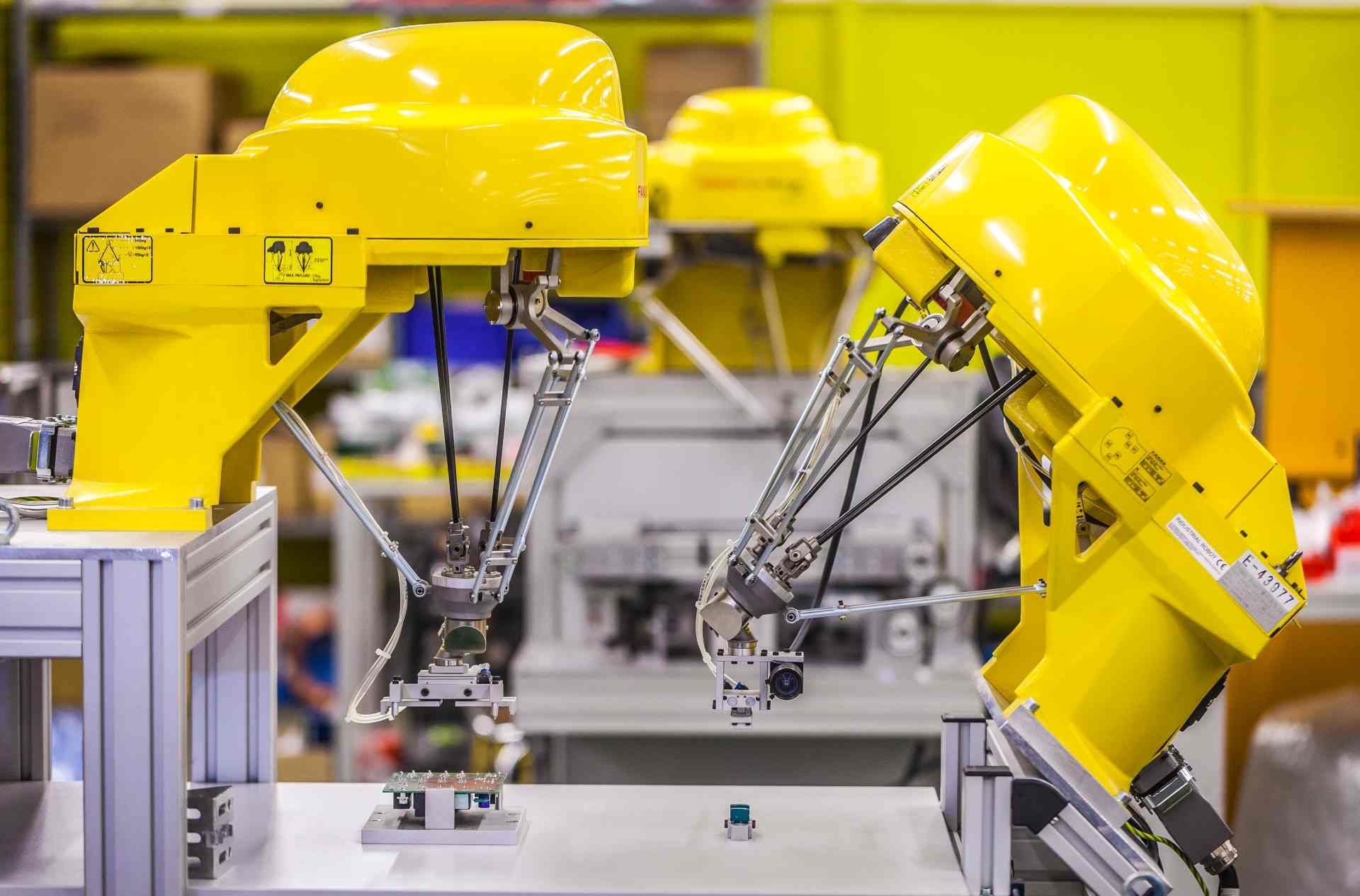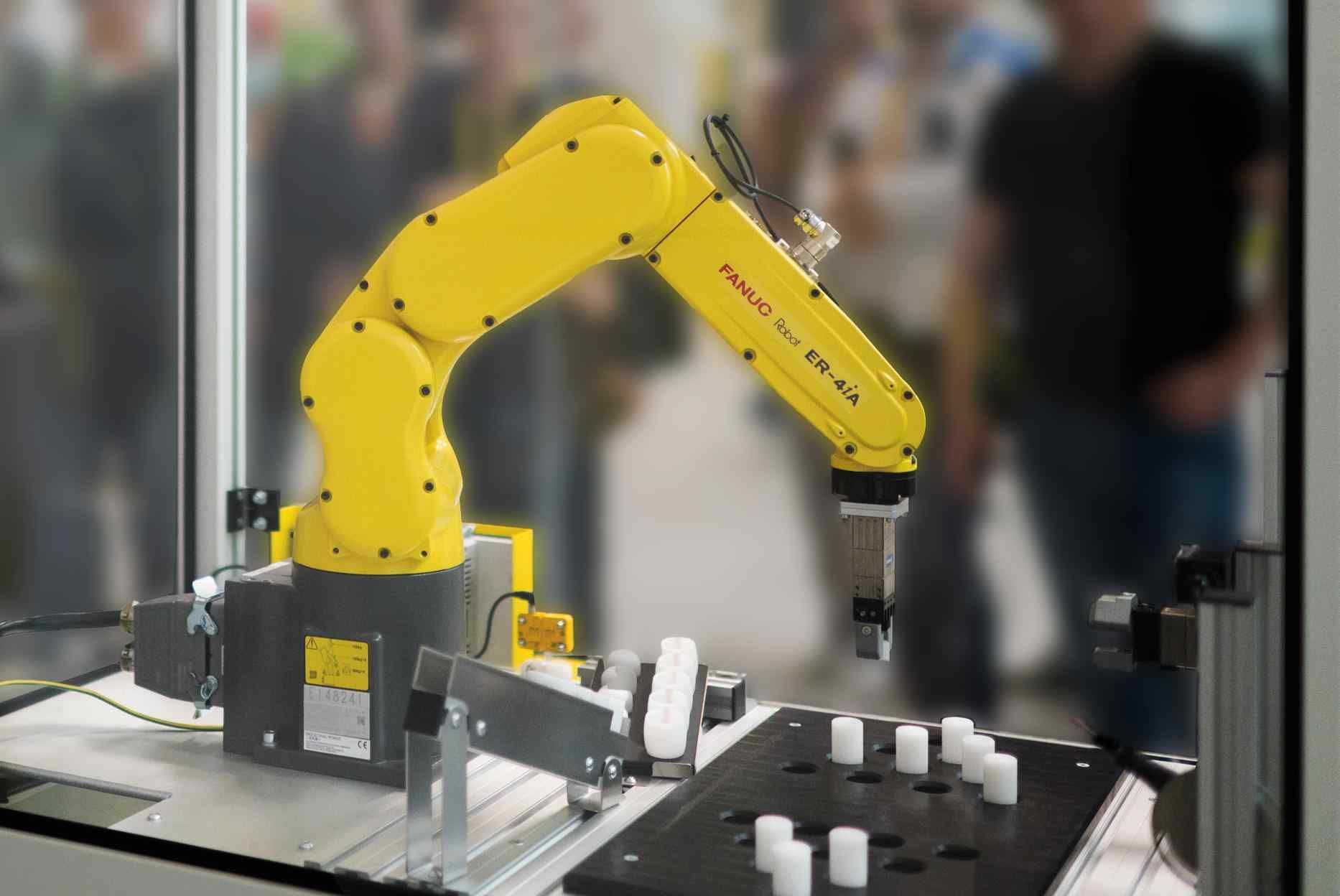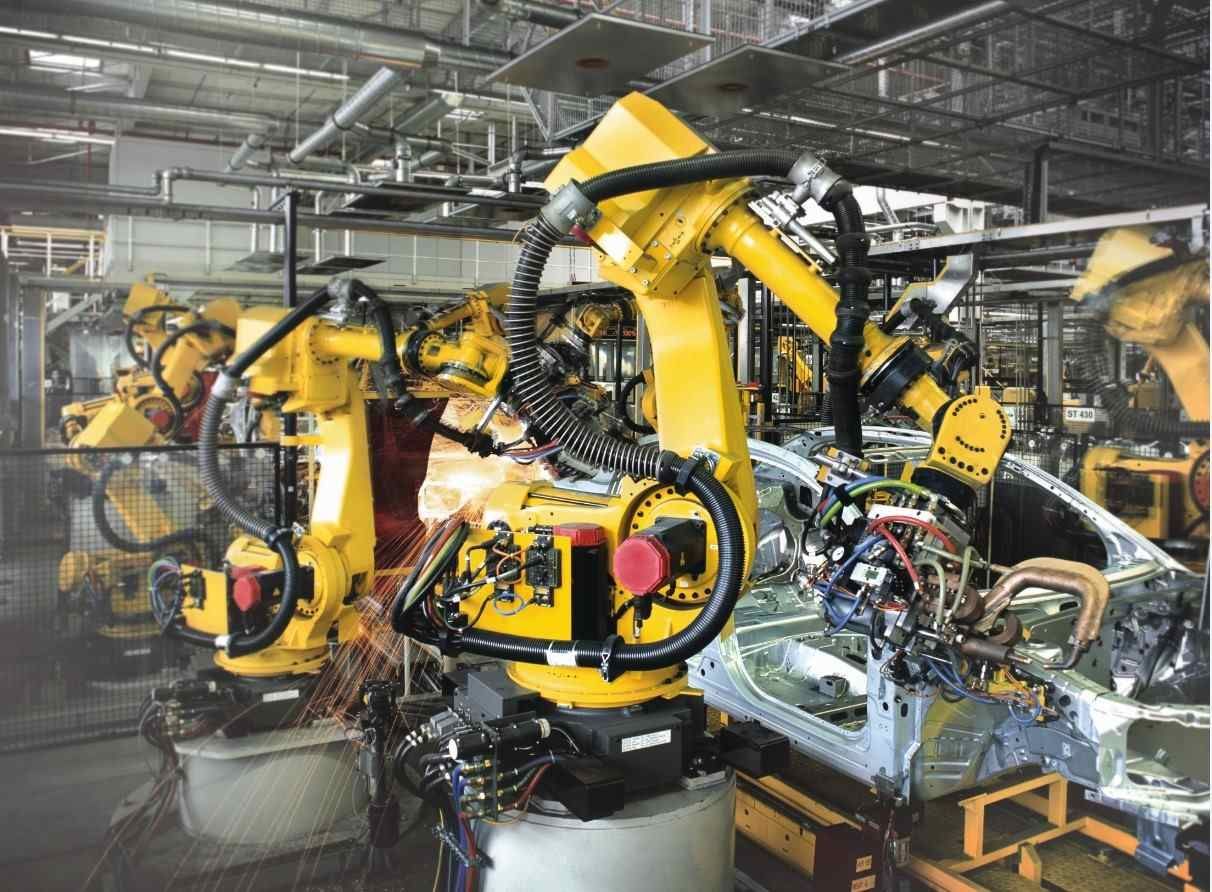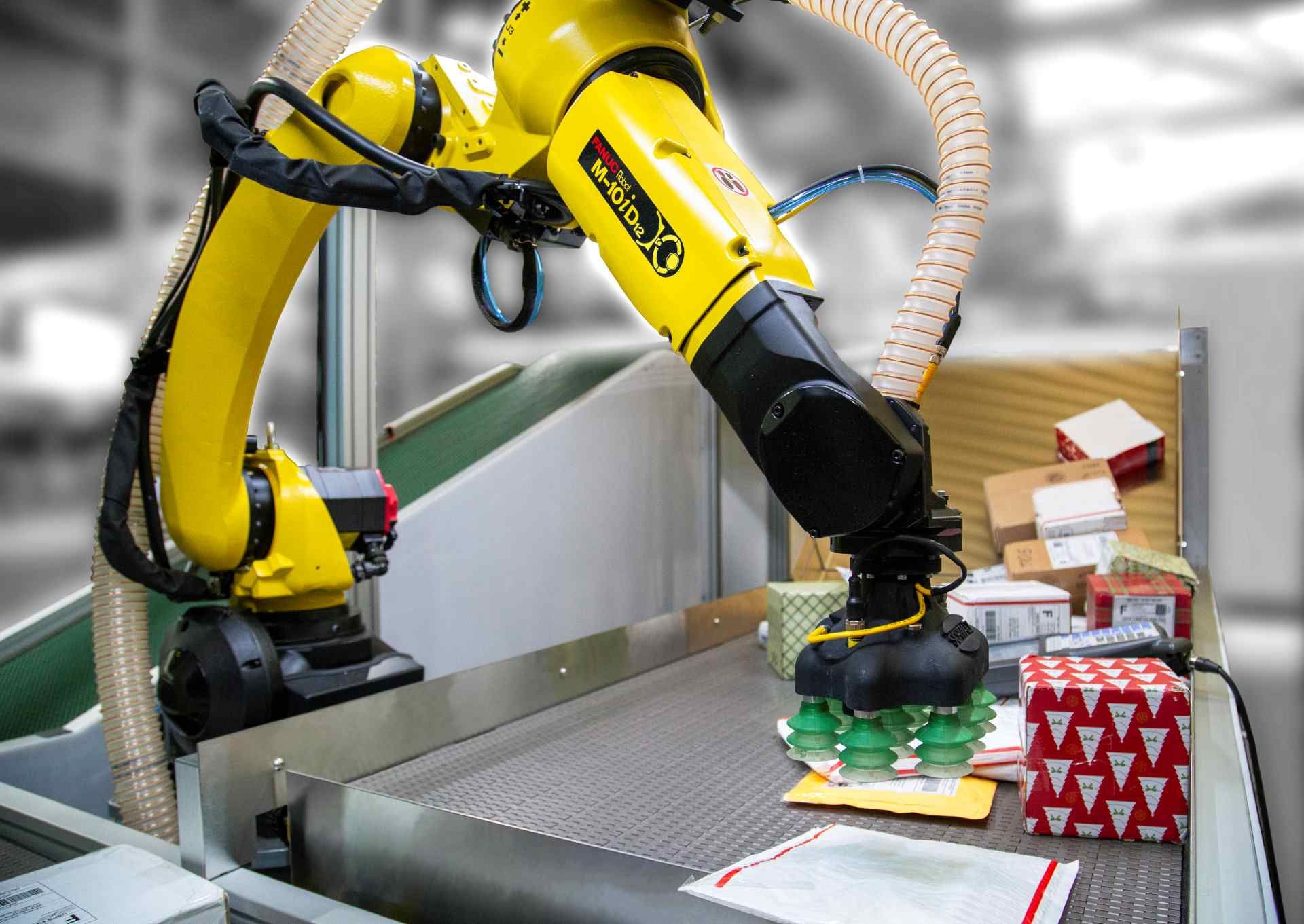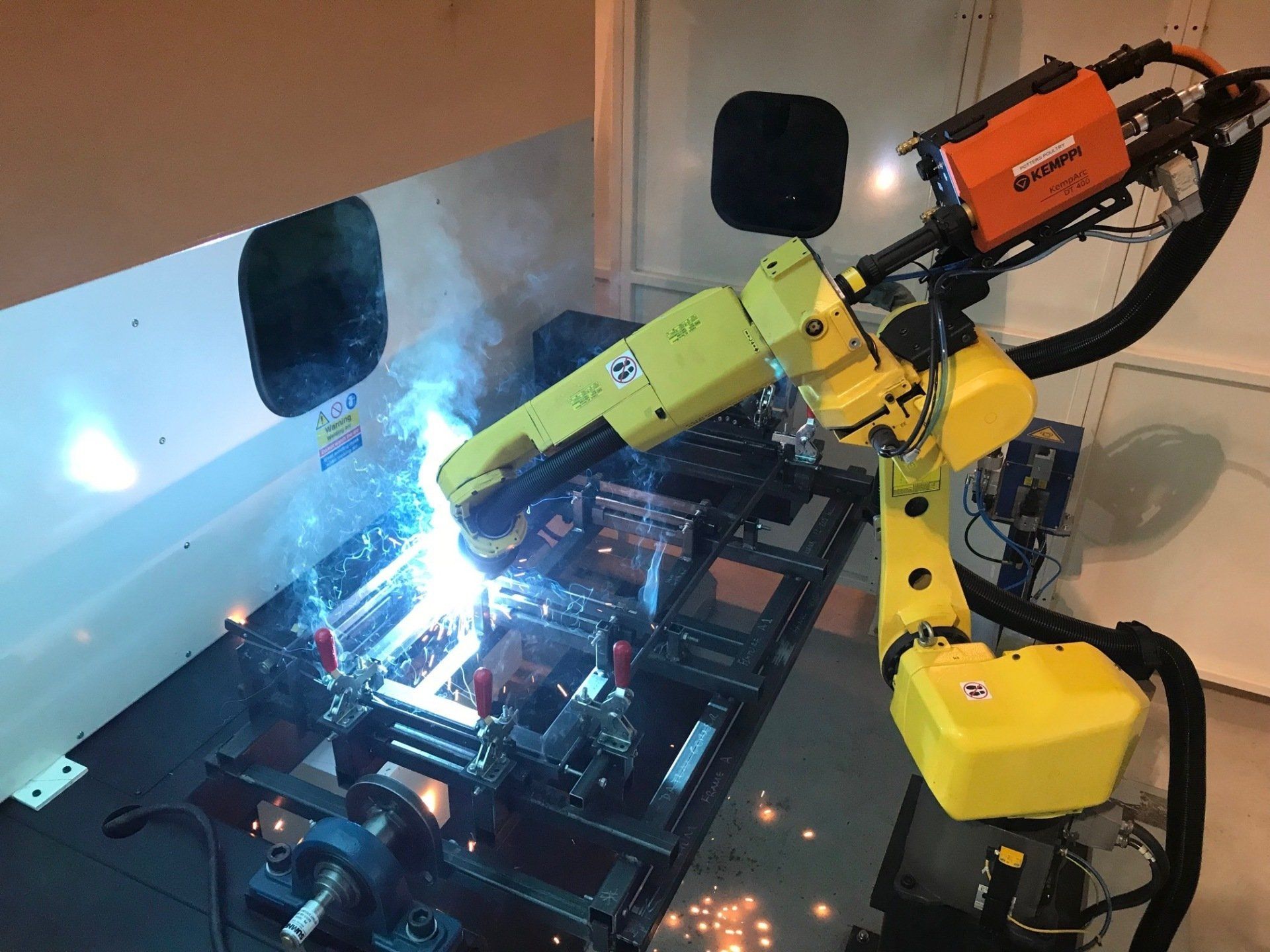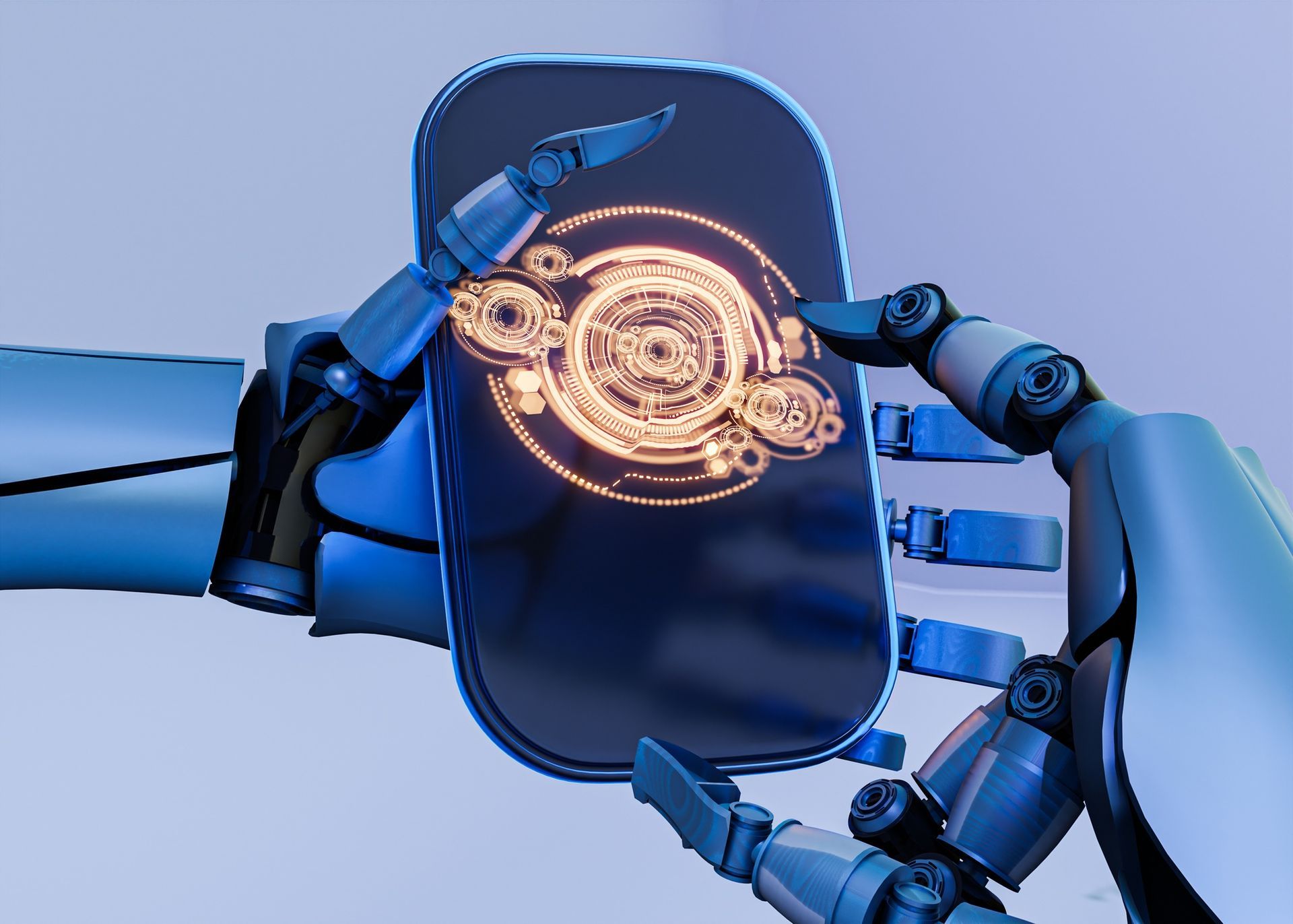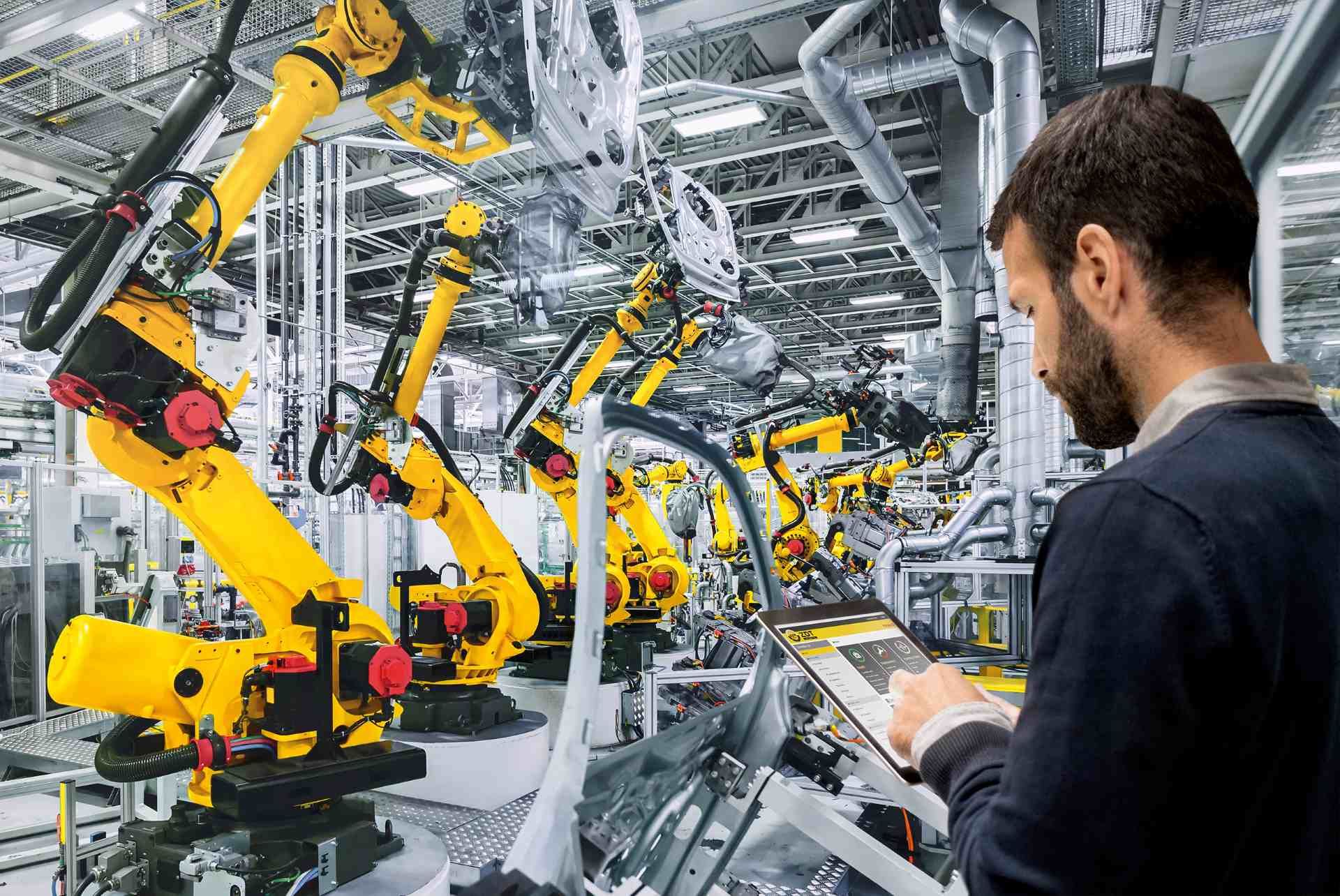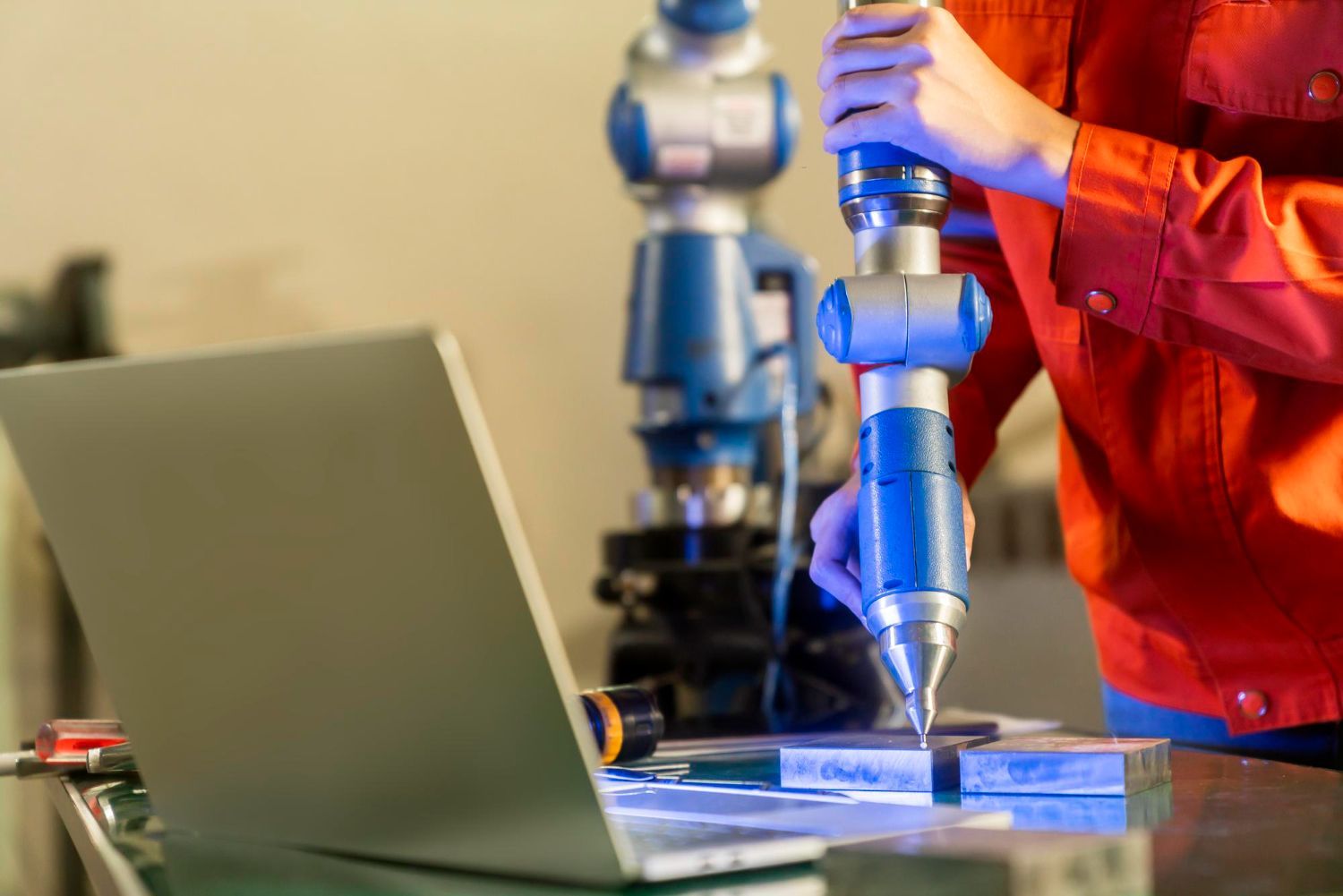Future Trends in Cobot Welding
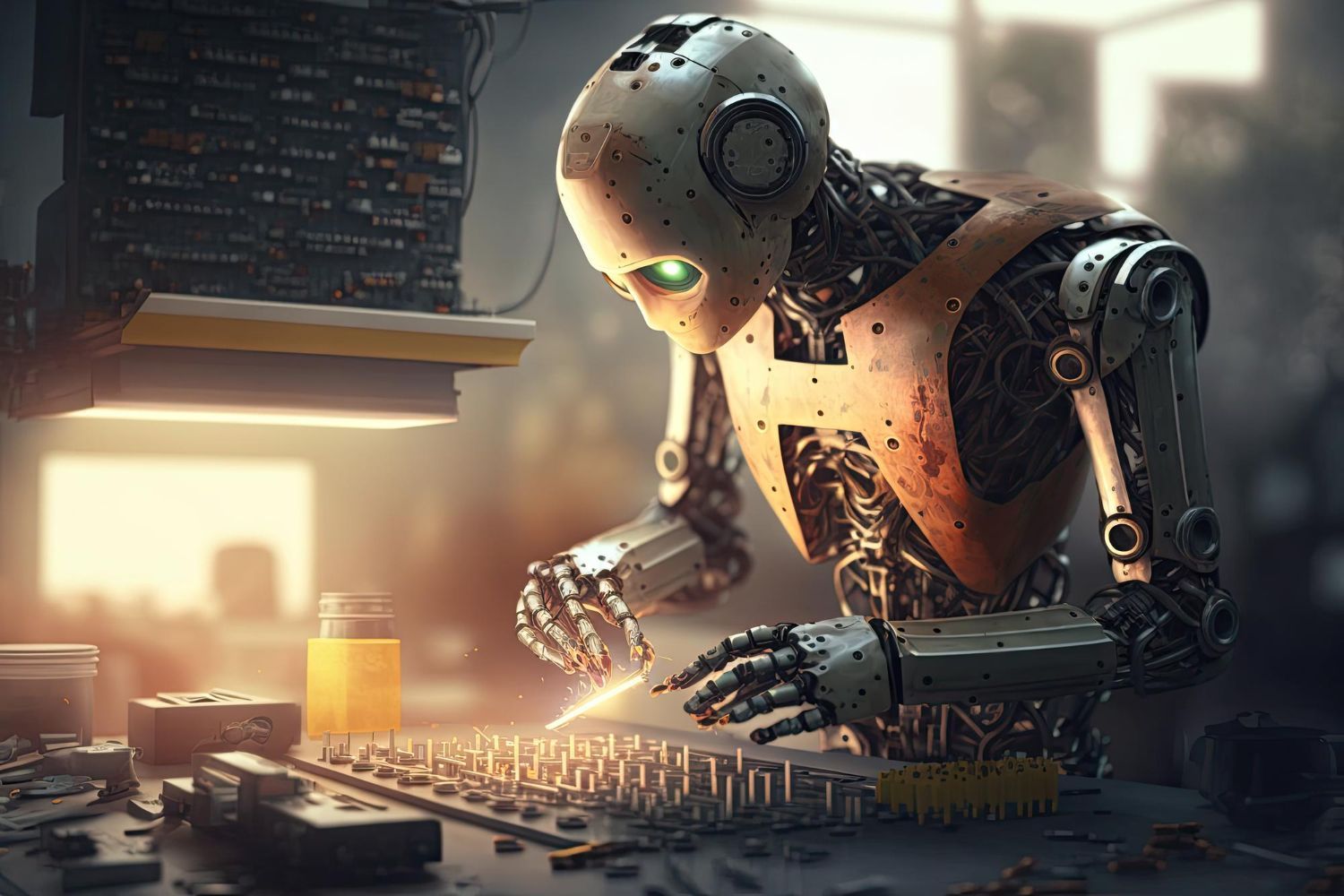
Welding is a foundational process that can be traced back to the Bronze Age around 3000 BC.
Since it was first used, welding has advanced from simply heating two metals and hammering them together to hyperbaric welding underwater. In manufacturing and fabrication, welding is indispensable. This technique allowed us to form the backbone of our modern world. As we step into a new era of technological prowess, the landscape of welding is poised for a revolution.
The convergence of robotics, artificial intelligence, and advanced human-robot interaction is ushering in a new era of welding, one that promises increased efficiency, safety, and precision.
So what then is the future of collaborative robots or ‘cobots’?
The Evolution of Collaborative Robot Welding
Collaborative robots, or cobots, have already made a considerable impact in various industries, and welding is no exception.
Industrial robots were revolutionary in the manufacturing industry improving speed, efficiency and productivity. Even with the invention of industrial robots, humans were required to operate heavy machinery and perform intricate tasks that the robots couldn’t do on their own.
Today cobots lead the trend in robotics, and cobot welding in particular is undergoing a remarkable transformation. Designed to work alongside human operators and amplify their capabilities whilst allowing humans to work with enhanced safety, cobots are like advanced prosthetics. Coupled with AI integration, advanced sensors and robotic engineering, cobots are bringing forth a new era of precision, consistency, and reliability to welding processes. With the ability to execute intricate welding tasks with unwavering precision, these robots ensure uniform weld quality, minimising the risk of errors that can compromise the structural integrity of welded structures.
Advanced Human-Robot Interaction
The integration of cobot welders into the process has redefined how humans and machines interact within manufacturing environments.
Traditionally, safety barriers and strict separation were essential to prevent accidents when industrial robots were in operation. However, with the advancement of sensor technologies in cobots, human-robot collaboration is becoming safer and less restrictive than before.
Cobots today are equipped with advanced sensor technologies that play a pivotal role in transforming human-robot interaction. For instance during welding tasks these sensors, which include technologies such as vision systems, depth sensors, and force/torque sensors, enable cobots to perceive their environment and recognise the presence of human operators in real-time. Allowing humans and machines to function more safely together and collaboration to be more intuitive.
Operators can now work alongside robots without the need for extensive safety barriers, enhancing both efficiency and flexibility in the manufacturing process.
Sensory and Perception Advancements
The marriage of advanced sensors and perception technologies is driving the evolution of welding. Modern sensory advancements allow robots to ‘see’ their surroundings with remarkable accuracy. With advancements in sensory technology, cobots equipped with sophisticated cameras, laser scanners, and depth sensors can now see and analyse workpieces in real-time. This newfound perception enables cobots to perform more intricate tasks that previously required human guidance.
Cobots can now adapt in real-time to varied workpieces. A skill that previously required human intervention. Cobots are able to autonomously adjust their welding parameters to match the specific characteristics of each workpiece, ensuring consistent and accurate welds.
Cobots now also have the ability to dynamically plan their welding paths. As they encounter surface irregularities, curves, or complex geometries, the cobots can instantaneously adjust their trajectory to maintain optimal contact and welding conditions. This dynamic path planning capability not only enhances the quality of welds but also reduces the need for human intervention, thereby improving productivity and efficiency in manufacturing.
Weld Seam Detection and Tracking
In welding, accuracy is a cornerstone for the creation of structurally sound and impeccably crafted products.
Identifying weld seams accurately is a fundamental aspect of successful welding. Advanced visual recognition systems in cobots enable them to detect weld seams even in challenging lighting conditions or cluttered environments that might prove difficult for human operators. Once detected, these cobots can precisely follow the contours of the weld seam, ensuring the weld is consistently placed exactly where it is needed. This capability is particularly valuable in intricate welding projects that demand precise seam alignment.
Weld seam detection and tracking enables cobots to adapt to variations in workpieces, adjust welding parameters in real-time, and correct for potential deviations. As a result, welding with cobots become more adaptable and efficient, reducing the need for human intervention.
Artificial Intelligence in Cobot Welding
Artificial Intelligence (AI) is the driving force behind the enhanced capabilities of collaborative robot welding. Through machine learning algorithms, cobots can learn from their welding experiences, continually improving their techniques and adapting to new challenges. Traditional robotic welding might have required meticulous programming adjustments for varying tasks, but AI changes the equation.
These cobots analyse and decipher the nuances of new welding projects by drawing upon their accumulated knowledge. With each weld, the cobot accumulates data, and refines its techniques and strategies in response to the intricacies of the task at hand.
This learning curve is not confined to a single project; it extends across an ever-expanding library of welding experiences, ensuring that each weld is not merely a repetition but an ongoing improvement. With a deep understanding of welding techniques, materials, and parameters, they autonomously tailor their approach to ensure optimal outcomes.
Future Collaboration Between Humans and Robots
The future of cobot welding is not a rivalry between humans and robots but a harmonious partnership that leverages the strengths of both.
Cobot-human cooperation signals a growing trend in collaborative robotics. Robots handle the repetitive and physically demanding tasks while humans bring creativity, problem-solving abilities, and critical thinking to the table. This collaboration allows for a more efficient, agile, and quality-driven welding process.
The current industrial cobot trend is an early indication of the future of collaborative robot welding and the remarkable potential of human-robot collaboration. As we embrace these innovations, the future of cobots and the welding industry is set to embark on an exciting journey toward a more automated, precise, and collaborative future.
Ready to future proof your business?
Find out how you can integrate cobots into your processes and leave your competitors in the dust. Contact us today.

